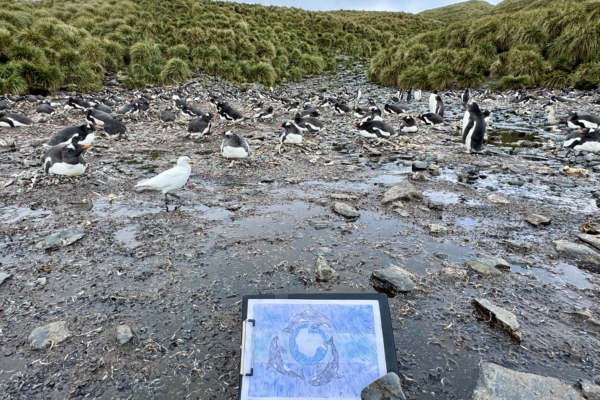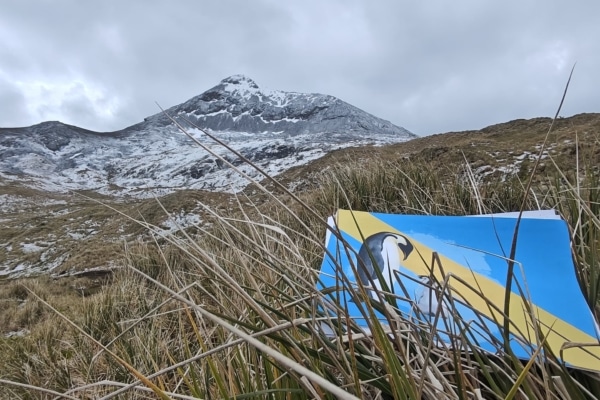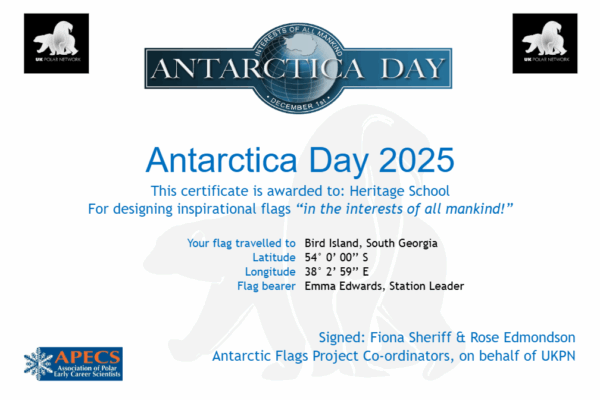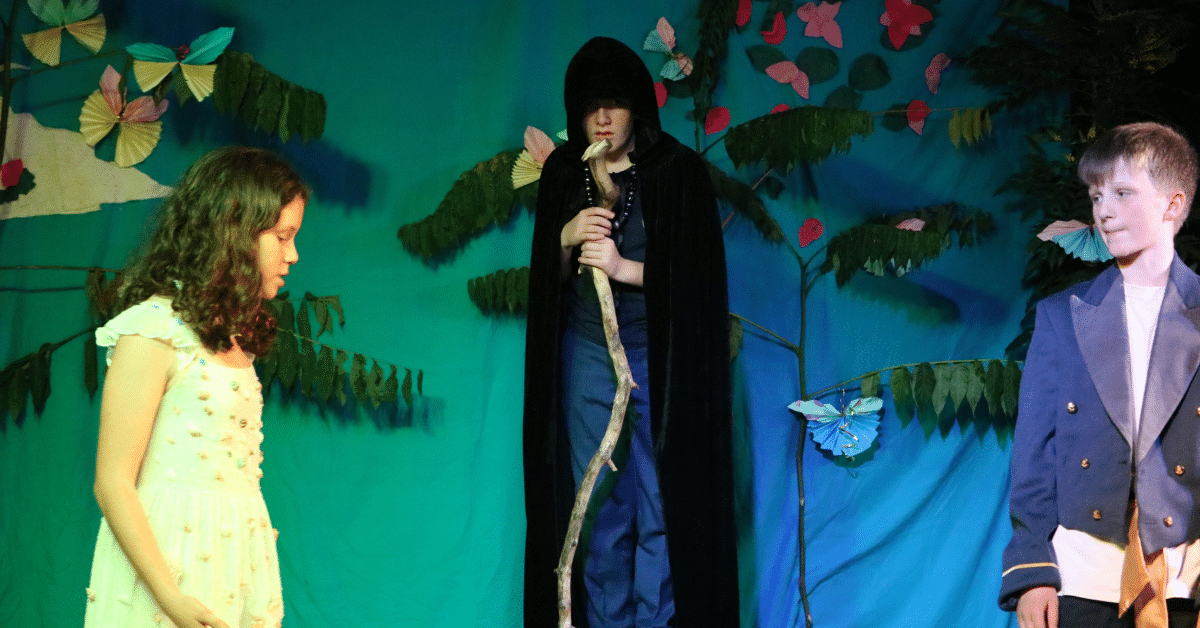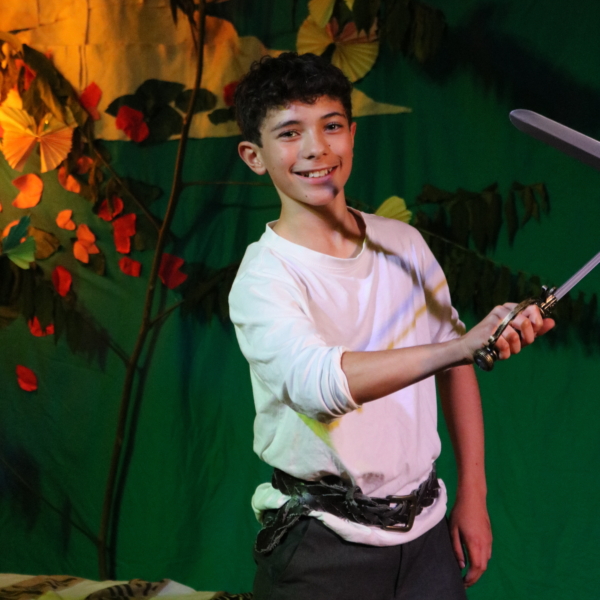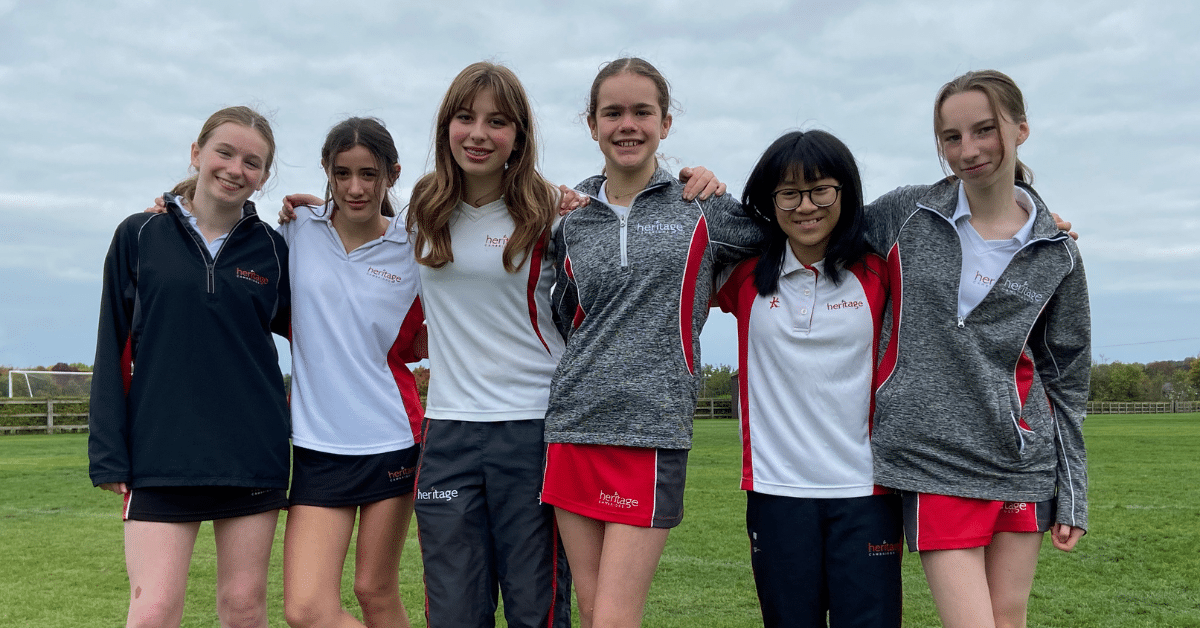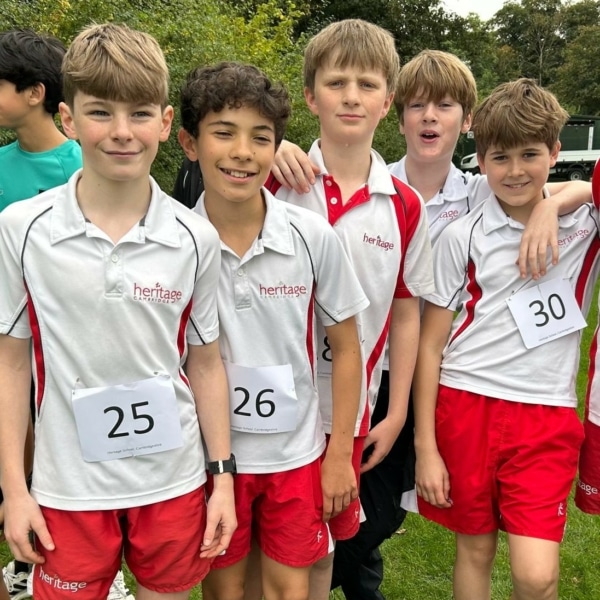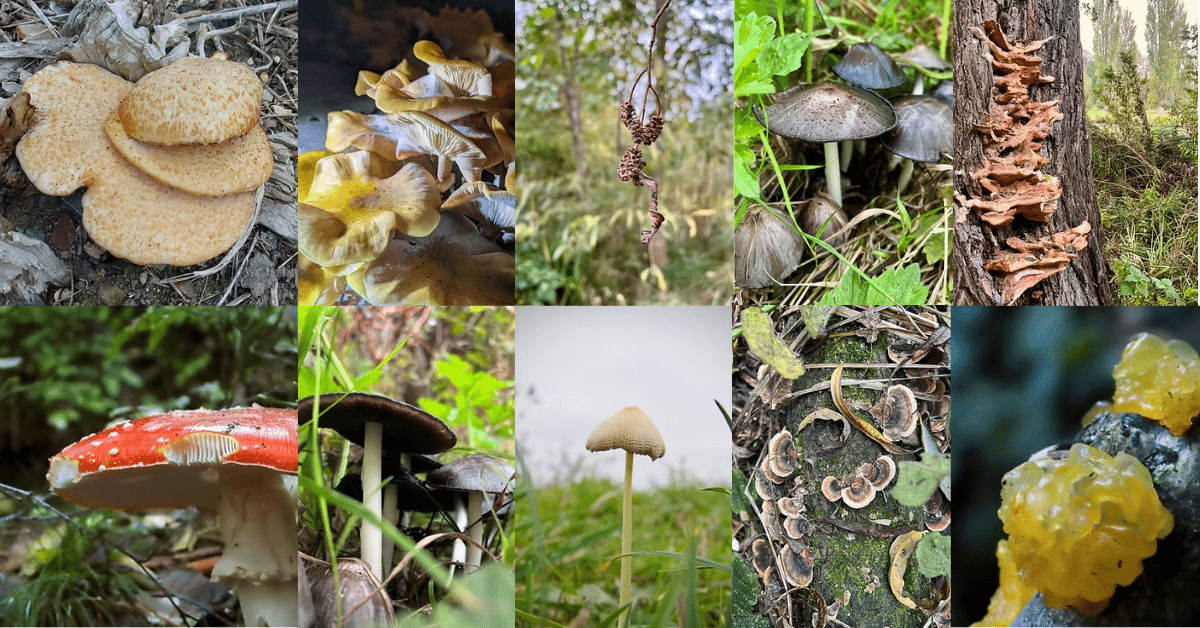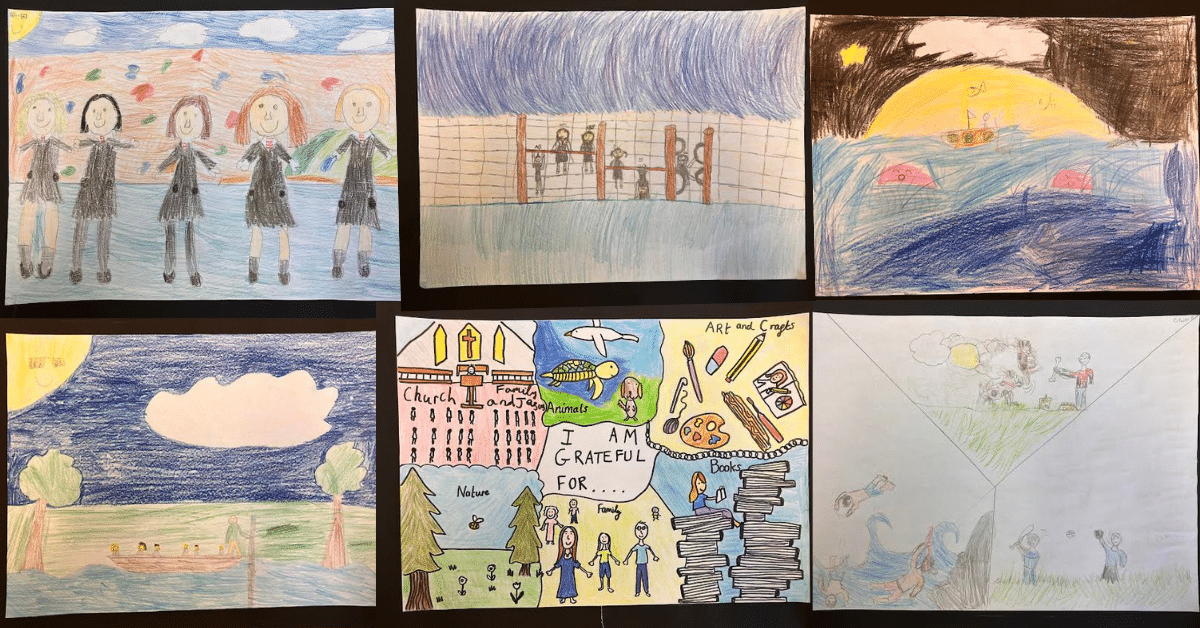Heritage School Flags Reach Bird Island with the British Antarctic Survey
Year 7 and Year 8 pupils from Heritage recently took part in the UK Polar Network’s Antarctic Flags Scheme, which invites children to design a flag for the Antarctic—an entire continent without its own flag. Among the many imaginative entries submitted, designs by Jess (Year 7) and George (Year 8) were selected to travel to Antarctica. Their flags have now arrived at Bird Island Research Station with Emma Edwards, Station Leader for the British Antarctic Survey (BAS). Ms Edwards kindly carried the flags to the station and sent back photographs of them displayed among Gentoo penguins, a curious sheathbill, and with LaRoche Peak rising in the background. These images give pupils a unique connection to one of the most remote and scientifically significant places on Earth. We warmly congratulate both winners and all entrants for their creativity and enthusiasm.
The Flags Scheme was created to mark Antarctica Day, observed each year on 1 December to commemorate the 1959 Antarctic Treaty—a landmark agreement that designated the continent as a place dedicated to peace and scientific discovery.
Bird Island—located off the north-west tip of South Georgia at around 54° south—is one of the world’s most extraordinary wildlife sites. Home to vast populations of penguins, fur seals, albatrosses, petrels, and prions, it provides an ideal setting for long-term ecological research led by BAS staff. The island’s rat-free status allows vulnerable burrowing bird species to thrive, and strict biosecurity measures help protect its fragile ecosystem. Life on station requires teamwork, shared responsibility, and resilience in all conditions.
This project has offered Heritage pupils a rare opportunity not only to show off their artistic talent but also to join an international educational partnership that connects classrooms with the polar regions.


